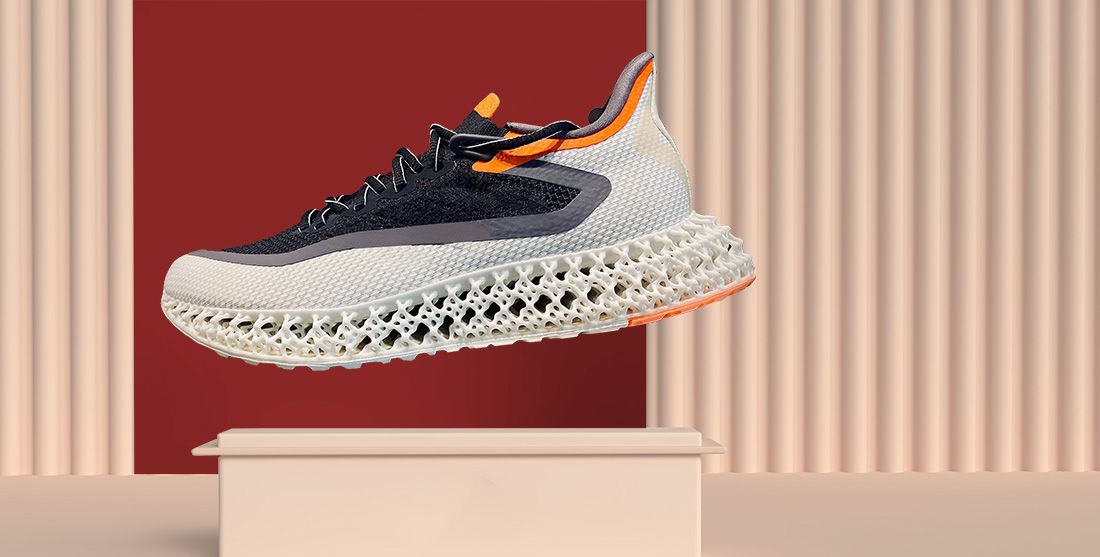Online raffles are a mainstay of the sneaker world. They help retailers deliver fairness and manage demand for high heat drops. But in recent years, major sneaker brands and retailers have been experimenting with different drop mechanisms. Why are these major brands looking for new ways to release high heat sneakers? What’s wrong with the sneaker raffle drop method? And what are the alternatives? Find out in this blog.
Sneaker raffles date back to early sneaker drop hype in the 2000s. Facing huge lines, fights over shoes, and complaints from neighbors and police, sneaker retailers needed an alternative to first-come, first-served drops.
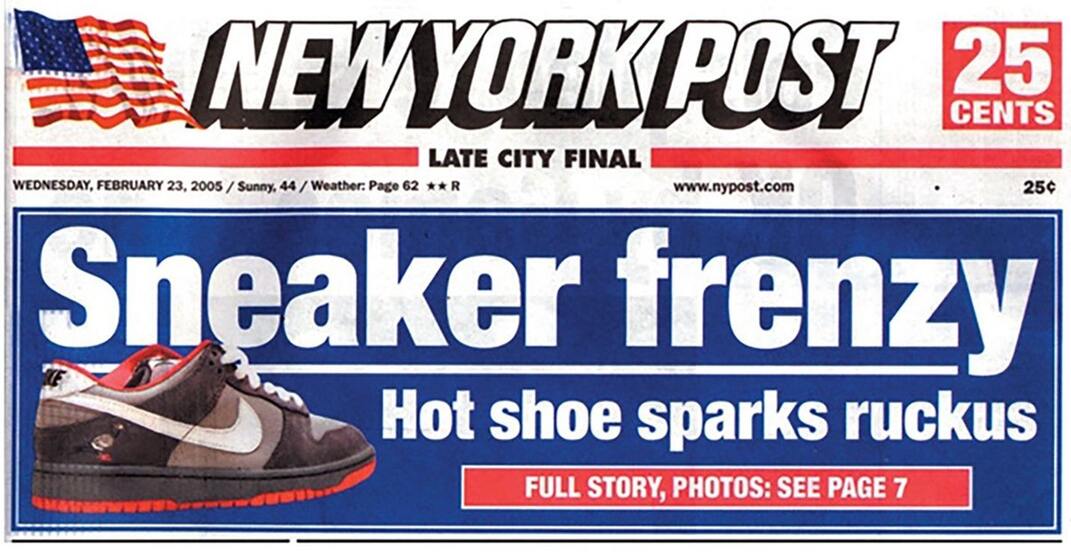
Raffles emerged as the best alternative. They let sneaker stores remove the competition over who could get in line first or how long people were willing to camp out. Raffles got rid of the rowdy sneaker drop crowds and eliminated the problem of people cutting in line.
Everyone gets an entry. And the entries are randomized, so everyone gets a fair chance.
Sneaker raffles were an elegant solution that quickly became the standard for high heat drops.
Now, you’d think that as sneaker drops moved online, the need for raffles would disappear, right? There’s no such thing as a public disturbance online. People can’t camp out overnight and get into fights on a website.
But the ecommerce shift presented new challenges for sneaker drops, such as:
- Sneaker bots: Bots were snatching up sneakers in large quantities at lightning-fast speeds.
- Fairness: The fairness of drops was impacted by bots and other factors like internet speed, tech savviness, and the need to be on the website at an exact second to cop a pair of high heat shoes.
- Website-crashing levels of demand: First-come, first-served drops caused all customers to race to websites to purchase items at an exact moment, which is a recipe for website crashes. Many sneaker sites simply couldn’t handle the traffic.
Sneaker raffles were used in physical shops to deal with demand and deliver fairness. And they were brought online for these same reasons.
The randomization of online raffles let retailers remove the speed-based advantages of bots, and a longer availability window (e.g., 24 hours instead of 2 minutes) let them avoid the massive traffic peaks first-come, first-served drops attracted.
But while online sneaker raffles help companies manage high-demand, low-supply sales, they aren’t a cure-all to the problems popular sneaker drops attract. And they bring with them their own distinct issues that are driving many large retailers to shift away from the traditional sneaker raffle model.
In this article, we explore the biggest issues and complaints about online sneaker raffles—and the key reasons major retailers are shifting away from them.
Table of contents
1. Raffle bots can still get around raffles
2. Raffles weaken sneaker drop hype
3. Raffles don’t (always) solve the issue of high demand
4. Raffles aren’t transparent
5. Third-party raffle services share your customer data
How sneaker retailers are moving away from raffles
Where there’s money to be made online, people will find a way. And sneaker raffles are no exception.
While most online shopping bots focus on things like speed to complete transactions faster than genuine customers, raffle bots focus on volume to increase their odds.
A raffle bot is a bot designed to make as many raffle entries as possible. Using a raffle bot is the equivalent of buying extra lottery tickets—the more you buy, the better your odds. But because raffles are free to enter, raffle bots can increase their chances at no additional cost.
Nike reports that raffle bots and bot attacks make up between 10 and 50% of all entries to their raffles. They remove up to 12 billion bot attempts monthly but concede that “it is possible that a small fraction of bot entries may be successful for any given launch.”
RELATED: Everything You Need to Know About Preventing Sneaker Bots
You might think that raffle bots can simply be stopped by identifying repeat addresses, credit card numbers, or email addresses—since one person can only have one of these, right?
But raffle bots and their users have sophisticated workarounds. They use rolling credit card numbers, multiple P.O. boxes, and fake names and email addresses en masse to circumvent the systems used to catch them out.
It’s not just individuals exploiting raffles either, there’s a whole industry behind botting sneakers. And with the estimated value of the global sneaker resale market at $10 billion, there are massive incentives for abusing raffles.
RELATED: Why Major Sneaker Brands Are Running "Live Raffles" for High Heat Sneaker Drops
Sneaker drops succeed based on scarcity and urgency. In the old days, it was the social proof and competition of queues that made people camp out overnight and get into fights over sneakers.
Now, you obviously don’t want people fighting. But what you do want is the hype of a real-world drop. You want the competition, the social proof, the urgency. You want to get people talking about your brand and your drop.
RELATED: 7 Simple Scarcity Marketing Strategies to Supercharge Ecommerce
When a raffle is open for a full week, or even a full day, you lose these powerful marketing benefits. There’s no pressure for customers to act now when they can delay entering. And when customers can’t see who else is entering, they lose the social proof that tells them they’re in good company by wanting the shoe.
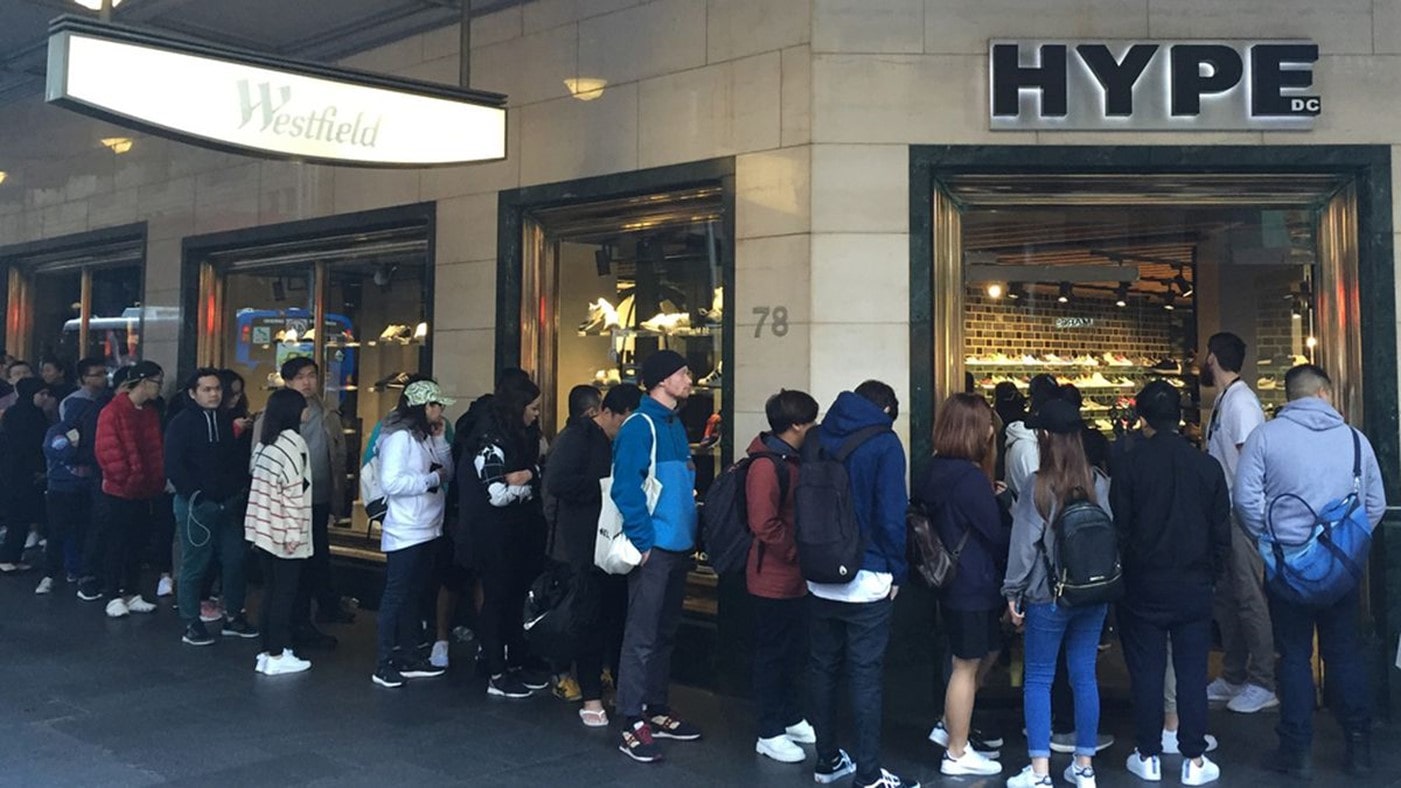
Product drops are all about creating a brand moment. They’re about gathering customers together. About creating buzz on and offline.
But raffles take the oomph out of sneaker drops. People enter slowly over the course of a week, then those selected to win get an email, and the rest forget about the whole thing. Where’s the fun and excitement in that?
RELATED: The 5 Powerful Brand Benefits of Product Drop Marketing
Nike knows this, which is why most of their raffles only have a ten-minute window where people can enter. Plus, they often start selecting winners just two minutes after the sale goes live, driving even more urgency.
It’s this semi-instant raffle technique (which we’ll refer to as “quick draws”) that enables Nike to generate massive hype around shoes while still leveraging the power of raffles.
But when brands do these quick draws, the issue of high demand returns.
Hype and high demand go together like sneakers and socks.
So, when Nike wants to generate hype around a release with a quick draw (a semi-instant raffle), they bring with that hype huge amounts of traffic. And with huge amounts of traffic comes the same technical issues and website crashes online sneaker raffles were designed to prevent.

Massive traffic isn’t just exclusive to quick draws, either. For particularly hyped shoes, traffic to even week-long sneaker raffles can still exceed site capacity.
In these cases, the raffle entry itself can become a breaking point. This occurred for the massively hyped collaborative drop with the Grateful Dead and Nike, where the initial demand to sign-up for a week-long raffle was enough to attract 100,000+ users the moment raffle entry became available.
Organizers used a virtual waiting room to protect the site from the massive traffic spike. And participants queued up online that first day even though they could have entered the raffle later in the week.
RELATED: What is a Virtual Waiting Room
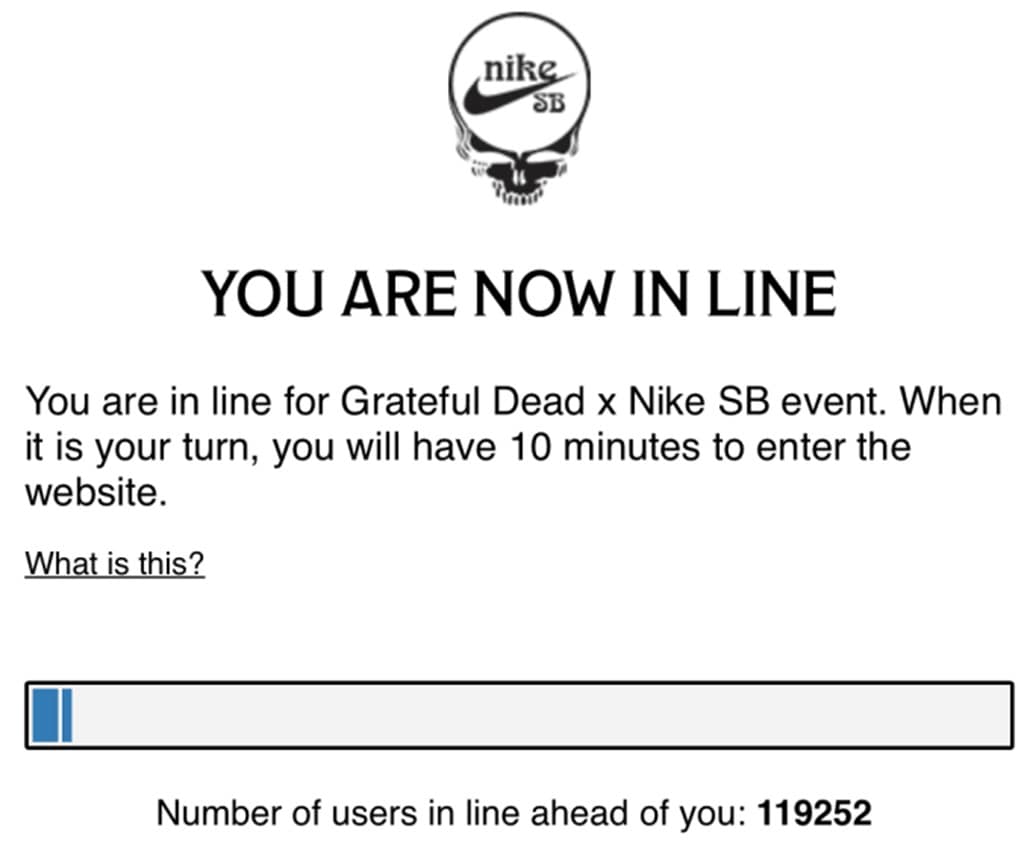
A key issue with sneaker raffles is their lack of transparency. Even though most sneaker raffles are truly random and fair, the sorting process happens behind closed doors, making many customers believe raffles are rigged.
It doesn’t help that there are dozens of stories of staff getting sneakers and people being paid off for an advantage—disdainfully known as “backdooring” in the sneaker world.
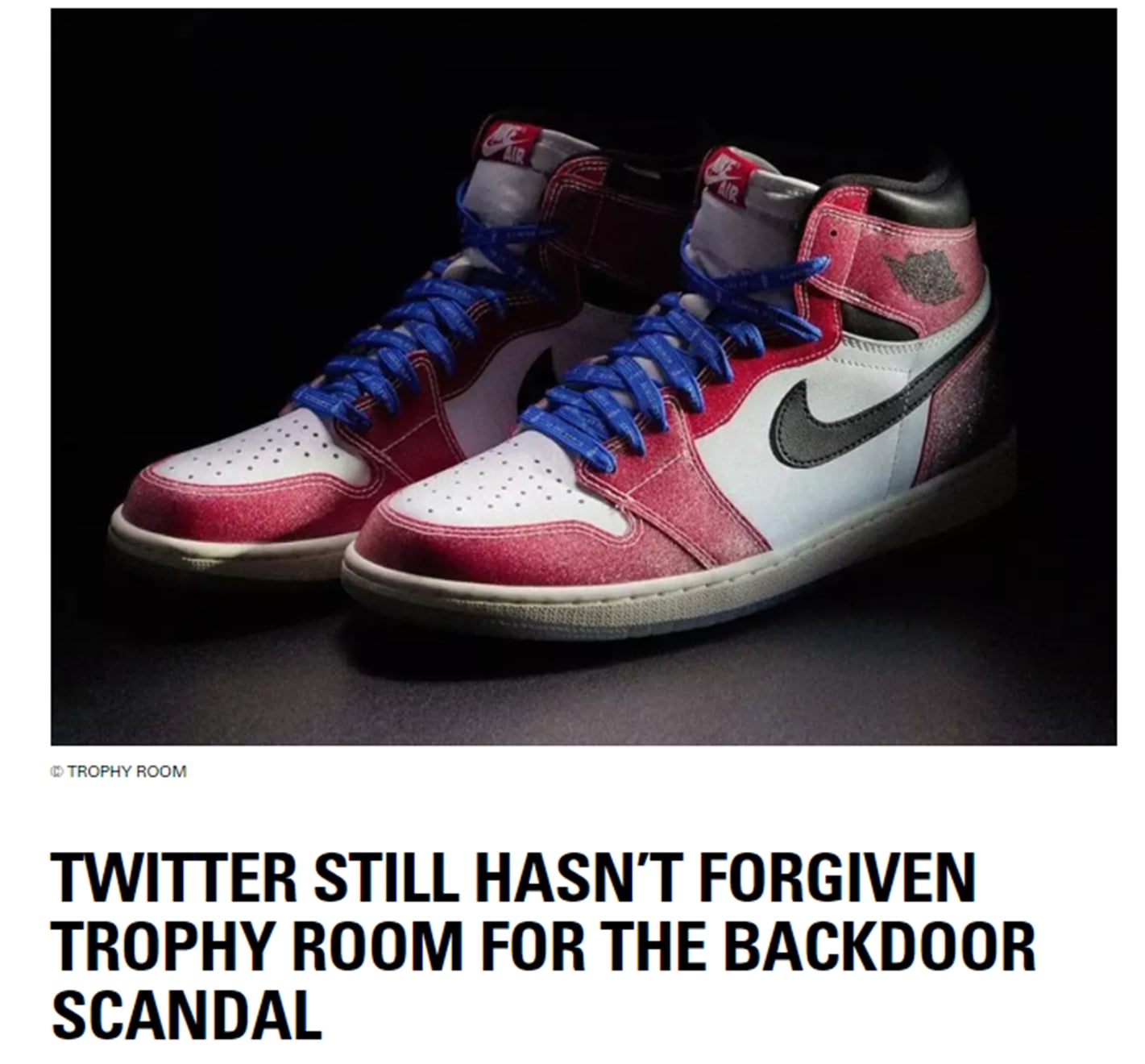
Plus, with hundreds of sneaker resellers and influencers flexing massive collections, regular customers are often suspicious as to just how “random” the “randomization” truly is.
RELATED: Customer Loyalty in Ecommerce: The Surprising Benefits of Fairness
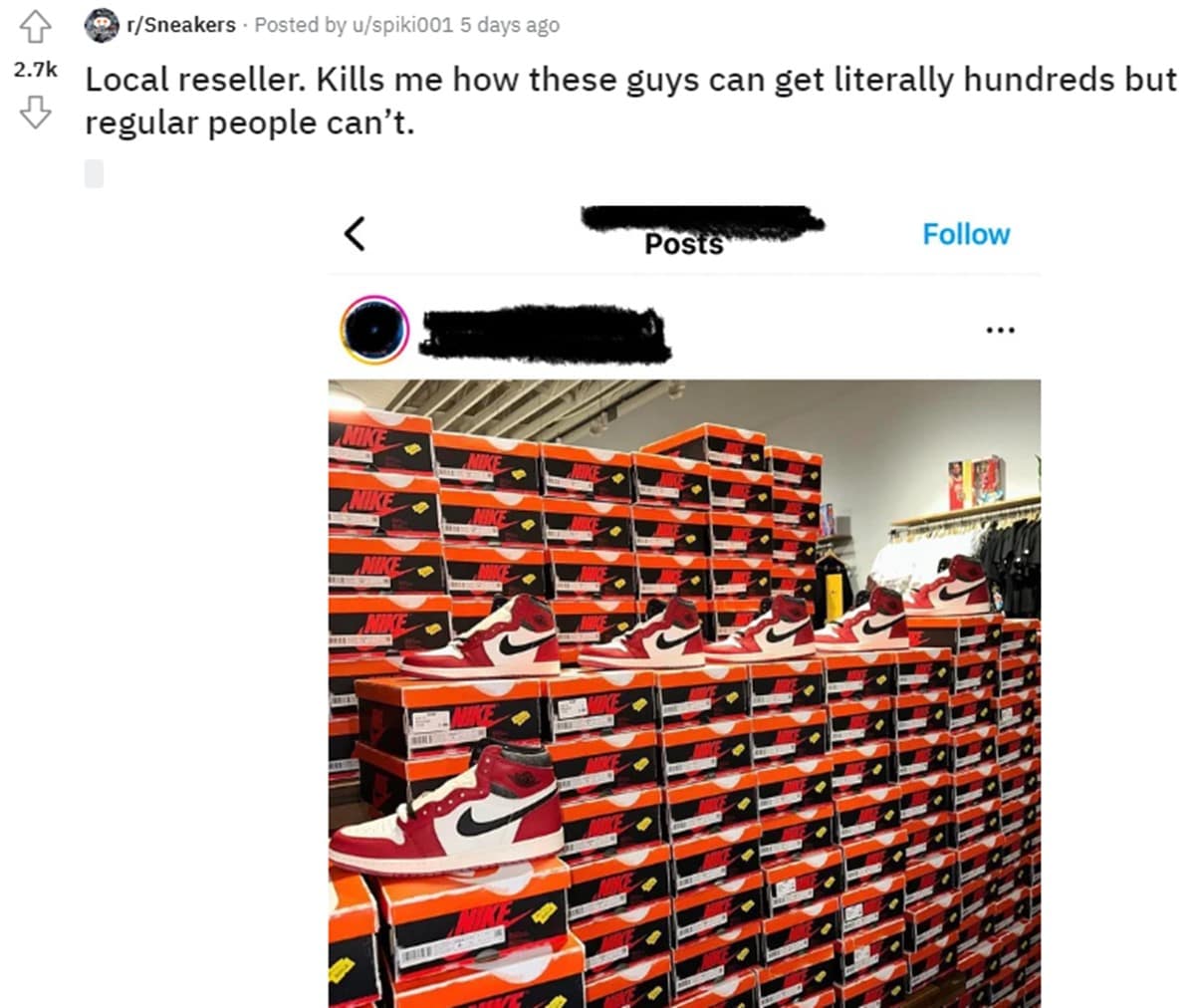
When regular customers lose again and again on raffles, and see images like the one above, they lose hope. “What’s the point?” They ask themselves.
In one Reddit poll, almost 45% of sneakerheads said they stopped bothering to join raffles altogether, because they simply thought they had no chance of winning.
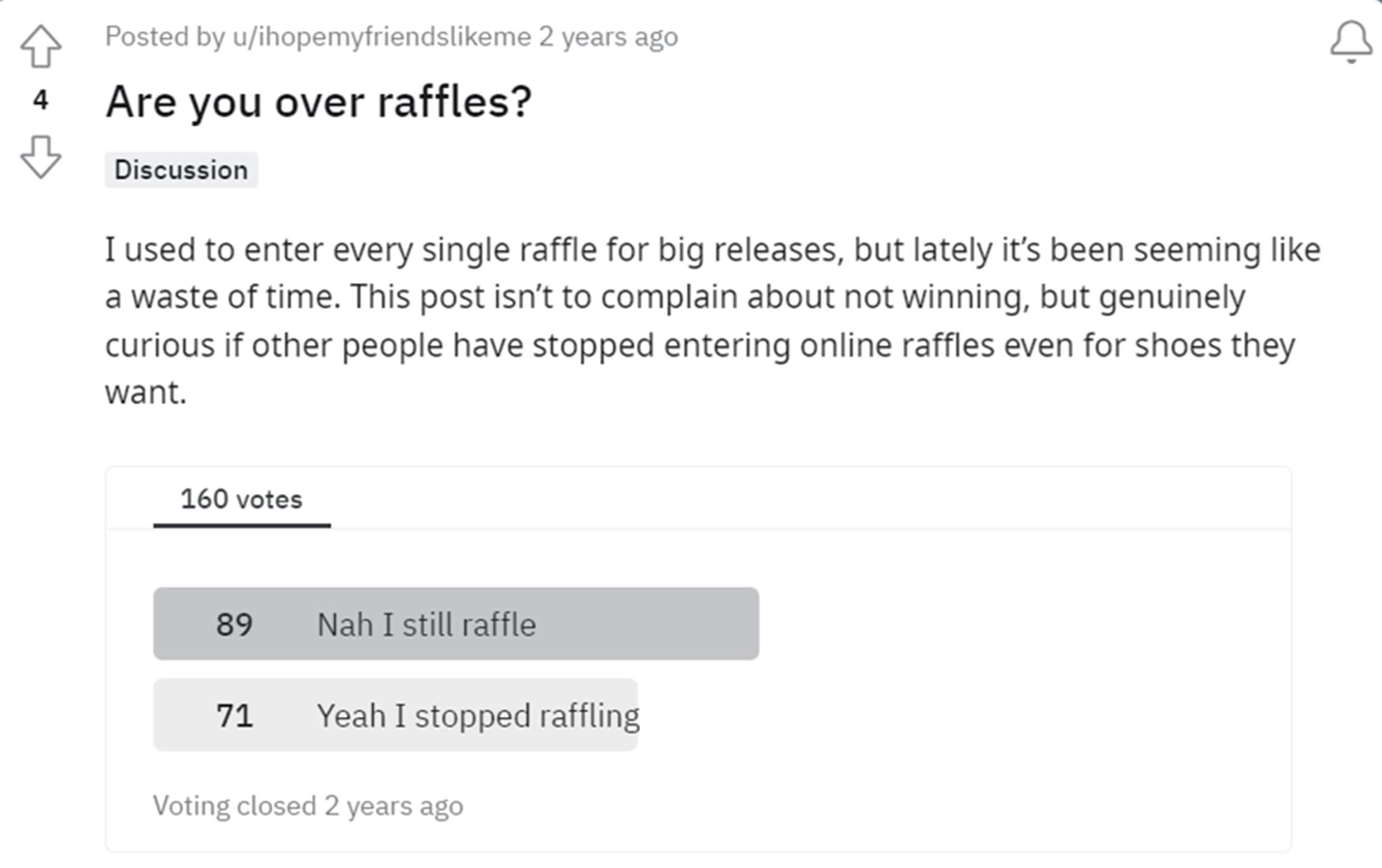
The complexity and massive scale of online sneaker raffles is to blame for the skepticism towards them.
To understand, consider a raffle at a local community event. You might be one of 100 people who enter. The winner is drawn live on stage. The announcer asks them to come up and collect their prize. Surprised and smiling, they make their way up and accept the prize.
The whole process happens right before your eyes, and you get to see the person who won. It seems fair, right?
Now imagine the same community event, but you’re one of 100,000 people who enter the raffle. This time the organizers tell you they have a sophisticated algorithm that chooses the winners. They say the selection process will happen behind closed doors and the winners will be announced privately. To make matters worse, you hear a rumor that John has won the last five raffles in a row. You check his Instagram and it’s filled with photos of him posing with his prizes with the hashtag #GotEm.

This is what online sneaker raffles look like today.
The odds of winning are tiny. No one sees the selection process. The winners are anonymous. And Instagram and Twitter are filled with people flexing huge wins on drop after drop.
Can you really blame sneakerheads for being skeptical about the fairness of raffles?
With large volumes of entries and claims of cheating (or “backdooring”, as it’s called in the sneaker world), many brands choose to run their raffles through a third-party provider.
This helps ensure no one within the company cheats and, particularly for smaller sneaker retailers, helps deal with the massive demand, bot mitigation, and randomization required to run a successful raffle.
But using a raffle service poses a different issue: giving your first- and zero-party data to a third-party service provider.
One of the biggest trends in the sneaker world in the past decade has been the shift towards direct-to-consumer (DTC). Major brands from Nike to adidas have been busy beefing their retail and ecommerce stores, their loyalty programs, and their data analytics.
Adidas’ adiClub, for instance, reportedly has 240 million members. These members buy 50% more often than non-members and have a lifetime value twice as high as non-members.
Nike’s investment in DTC has been similarly massive. It now runs many of its high heat drops exclusively for members. This means every person who signs up for a drop provides Nike with valuable personal details and data. And Nike’s “Consumer Direct Acceleration” strategy has already seen them acquire three data and analytics start-ups—to make the most of this first-party data.
In short, sneaker brands and retailers are investing huge sums in understanding and developing their relationships with customers.
But third-party sneaker raffle services run counter to this trend.
Most sneaker raffle services take both the customer relationship and the data that comes with it for themselves. Customers set up accounts with the raffle service, provide their email addresses and preferences to them, and form their relationships with them.
These raffles typically take place on a no-navigation version of your site—meaning customers don’t see your other products, your live sales and recommendations, or your web design and branding.
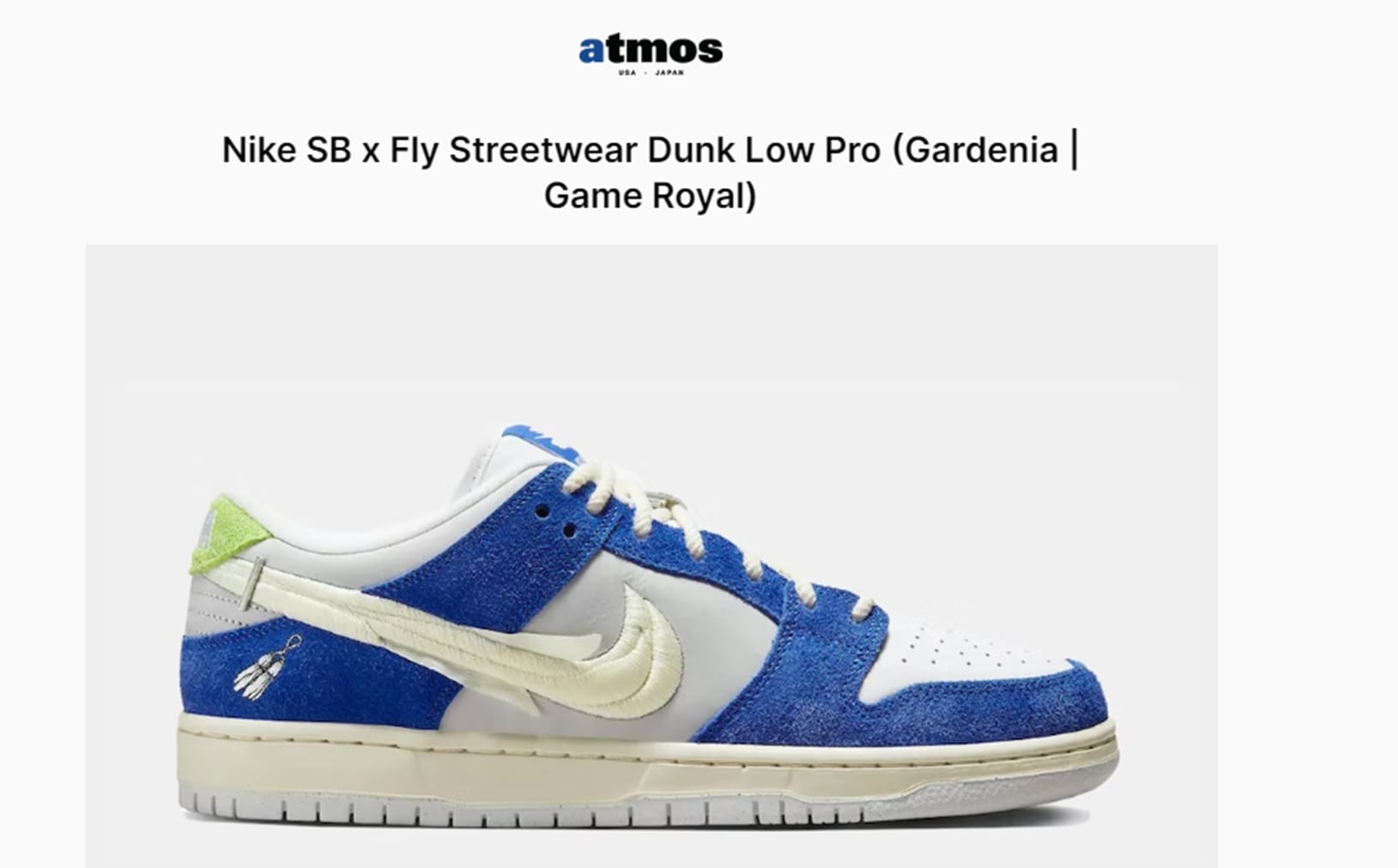
Essentially, your brand and your relationship with customers is left largely out of the picture when using a third-party raffle service.
When Queue-it spoke to a major sneaker retailer we work with, they told us that sharing this data and their customer relationships with another company is simply something they’d never consider.
In an age where data is gold and customer loyalty is king, giving a third-party provider access to your customers’ contact, address, billing, and account details is not something companies should take lightly.
As we’ve established, sneaker raffles help solve a couple important issues for sneaker retailers. But they also create several new ones.
So, where does that leave sneaker brands and retailers?
Most major brands are shifting to a hybrid drop model. Today retailers and DTC brands typically have a repertoire of different mechanisms they draw upon for different situations. This includes traditional raffles, “quick draws”, invite-only drops, virtual queues, and the traditional, first-come, first-served sale.
Adidas, for instance, uses 3 different release mechanics in addition to the traditional first-come, first-served approach for non-hyped sneakers. These are:
- The draw: A sneaker raffle
- The invite: A sneaker drop only available to people adidas chooses to invite
- The queue: An online queue used to tackle high demand and detect bots
They say they determine which sales method they’ll used based on “on the demand, availability, strategy and distribution of a drop.”
Nike has the same 3 release mechanisms up its sleeves—albeit by different names.
But SNIPES, Foot Locker, and New Balance use a fourth sales strategy, one which combines the fairness of “the draw”, with the exclusivity of “the invite”, with the site protection and hype of “the queue.”
It’s called the live raffle.
Check out the next blog in our series on sneaker raffles to discover why major sneaker brands are running “live raffles” for high heat sneaker drops.
